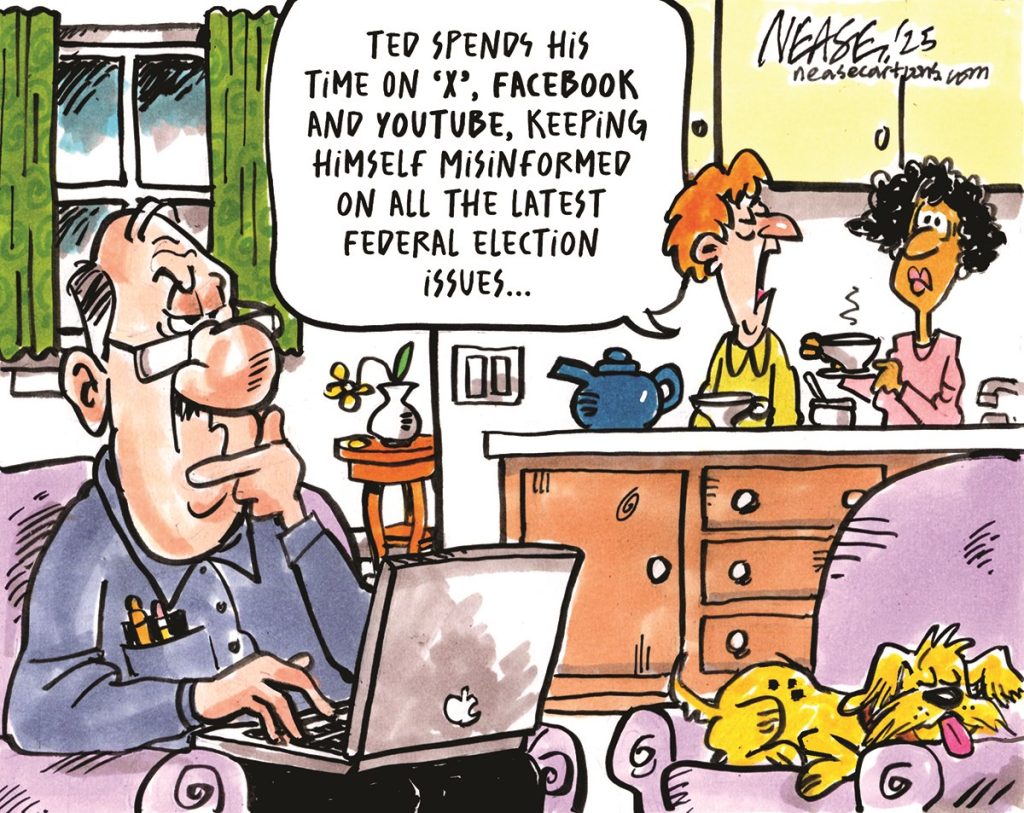Cartoon of the Day: Misinformation Sparks Debate on the Evolving Media Landscape
In today’s rapidly evolving media landscape, the proliferation of misinformation poses a significant challenge to individuals and society alike. The ease with which false or misleading information can be created and disseminated online has blurred the lines between credible news sources and purveyors of fabricated narratives. This phenomenon, often amplified by social media algorithms and echo chambers, has far-reaching consequences, impacting public discourse, political processes, and even public health. Examining the root causes of misinformation, its diverse forms, and the potential solutions is crucial to navigating this increasingly complex information ecosystem.
One of the key drivers of misinformation is the democratization of information production and distribution. The internet has empowered individuals to become content creators, bypassing traditional gatekeepers like journalists and editors. While this has undoubtedly fostered diverse perspectives and citizen journalism, it has also created an environment where unverified information can easily gain traction. The pursuit of clicks, shares, and engagement incentivizes the creation of sensationalized content, often lacking factual basis. Furthermore, the anonymity afforded by online platforms allows malicious actors to spread disinformation without accountability, exacerbating the problem. This has led to the rise of sophisticated disinformation campaigns, often orchestrated by state-sponsored actors or ideologically driven groups, seeking to manipulate public opinion and sow discord.
Misinformation manifests in various forms, ranging from outright fabrications and manipulated media to more subtle distortions of facts and context. "Fake news," a term that has gained widespread usage, often refers to entirely fabricated stories designed to mislead readers. Doctored images and videos, utilizing sophisticated editing techniques, can further blur the lines between reality and fiction, making it difficult for individuals to discern authentic content. Another insidious form of misinformation involves the selective presentation of facts or the omission of crucial context, creating a misleading narrative that serves a particular agenda. This can be particularly damaging in politically charged contexts, where manipulating information can sway public opinion and influence election outcomes.
The consequences of misinformation are multifaceted and far-reaching. Erosion of trust in credible news sources is a significant concern. As individuals are bombarded with conflicting information, it becomes increasingly challenging to identify reliable sources, leading to skepticism and cynicism towards established institutions and journalistic practices. This erosion of trust can undermine public faith in democratic processes and institutions, creating a climate of polarization and division. Furthermore, misinformation can have tangible real-world impacts. For instance, the spread of false information about vaccines has contributed to vaccine hesitancy, posing a serious threat to public health. Similarly, misinformation about health crises or natural disasters can hinder effective responses and endanger lives.
Combating misinformation requires a multi-pronged approach involving individuals, social media platforms, educational institutions, and governments. Media literacy education is crucial in equipping individuals with the critical thinking skills necessary to evaluate information and identify misinformation. This involves developing skills in source verification, recognizing logical fallacies, and understanding the difference between opinion and fact. Social media platforms have a responsibility to implement effective measures to flag and remove misinformation, while promoting transparency and accountability in their algorithms. Fact-checking organizations play a vital role in debunking false claims and providing accurate information. Governments, while respecting freedom of expression, can play a role in regulating the spread of disinformation, particularly when it poses a threat to public safety or national security.
The battle against misinformation is an ongoing challenge that requires constant vigilance and adaptation. As technology continues to evolve, so too will the methods used to create and disseminate misinformation. Fostering a culture of critical thinking, promoting media literacy, and encouraging responsible information sharing are essential to mitigating the harmful effects of misinformation and safeguarding the integrity of the information ecosystem. The future of informed decision-making and democratic discourse relies on our collective efforts to combat the spread of misleading information and uphold the value of truth.


